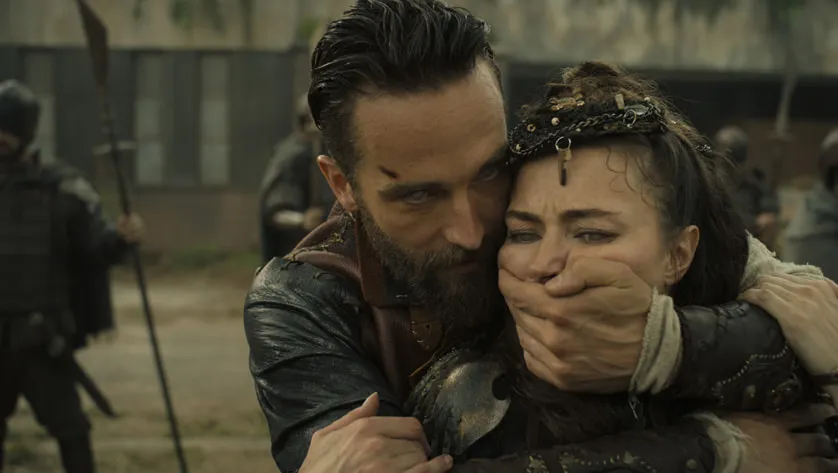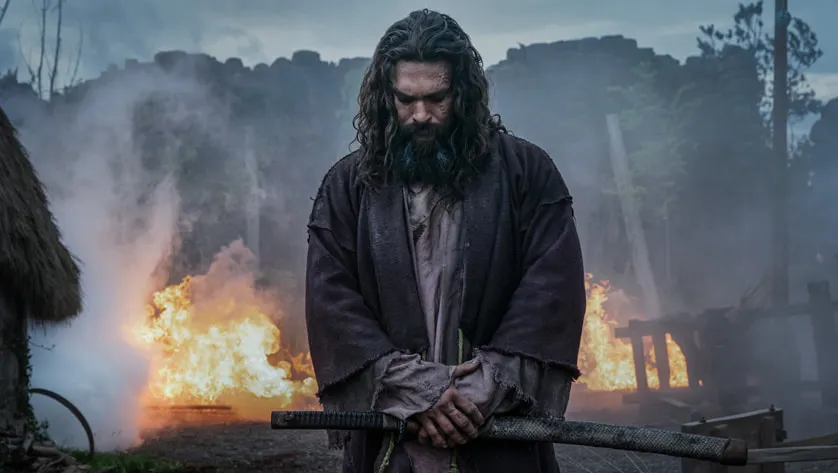In a world full of uncertainty and rapid change, especially when it comes to technology, climate and social behavior, imagining what is to come has become an almost inevitable activity. In this sense, art — especially audiovisual art — emerges as a powerful way to help us reflect. It is in this context that post-apocalyptic series “See”, produced by Apple TV, stands out in an absolutely impressive way.

From the outset, it is clear that this series has no intention of being just another piece of passing entertainment. On the contrary, it presents itself as a provocative, thought-provoking and emotionally engaging work. In fact, it not only captures attention, but completely transforms the way we see the future — or, paradoxically, how we could survive without seeing it.
A Blind Future, But Full of Revelations
First, it is important to understand the central premise of “See.” The story takes place in a dystopian future, after a devastating virus has decimated a large part of the world’s population. As a direct consequence, the few survivors lost their sense of sight. Later, after generations of living in darkness, blindness became a normal, almost spiritual condition. Society then rebuilds itself based on new codes, new beliefs and new ways of living.
In this way, the series transports us to an absolutely original reality. Cities, tools, war tactics and even religious ceremonies are shaped by this lack of vision. In addition, the production delves deep into the creation of a new body language, new ways of communicating and surviving. The series impresses precisely because it transforms what many see as a limitation into a rich and fascinating human condition.
Jason Momoa: Much More Than a Warrior
Played by the charismatic Jason Momoa, Baba Voss is the main character of the story. Although at first glance he seems like just another tribal warrior, we soon realize that there is much more behind his brute strength. As the episodes progress, we see a man marked by tragedy, guided by deep values and driven by an unconditional love for his family.
In fact, it is through the figure of Baba Voss that series explores several moral dilemmas. He protects, tooth and nail, two adopted children who were born with a gift considered dangerous: sight. This fact, naturally, turns the family into a target of persecution, putting at risk not only their safety, but the balance of the entire social system.
Therefore, Momoa's performance goes far beyond physical action. He silently conveys complex emotions, such as fear, courage, loyalty and sacrifice. Thus, the viewer immerses himself in the journey of a man who, even without seeing, sees much more than those who hold power.
Blindness as a Mirror of Society
Rather than treating blindness as just an obstacle, “See” series transforms this condition into a central element of the plot, full of philosophical meanings. Throughout the story, we realize that true blindness is not only in physical vision, but in ignorance, prejudice and denial of knowledge.
Incidentally, this allegory is cleverly reinforced by the script. Those who see are persecuted, considered witches or heretics. Knowledge has become a risk, and curiosity, a sin. We are therefore led to reflect: to what extent can a society ignore or fear that which it does not understand?
Furthermore, the series forces us to draw parallels with the current world. We live in an era of visual excess, manipulated images and superficial information. However, by placing us in a reality where vision does not exist, “See” forces us to use other senses — both physical and emotional.

Landscapes, Sounds and Sensory Immersion
Apple TV's production also deserves applause for its technical quality. First of all, the set design is breathtaking. Although it deals with a world of blind people, the series presents us with grandiose landscapes, from dense forests to imposing mountains. The contrast between the scenery and the characters' condition is intentional — and extremely effective.
Furthermore, the sound design is a spectacle in itself. Since hearing replaces sight, sound takes on an unprecedented prominence. Each noise is loaded with meaning. The viewer, in turn, begins to pay attention to details that were previously overlooked: a twig breaking, rapid breathing, the sound of footsteps in the mud. All of this creates a rare and captivating immersion.
Furthermore, the costumes and objects used by the characters were also designed to reflect a world where touch and hearing are essential. Every detail reinforces the credibility of this imaginary universe — and that is exactly what keeps us completely engaged.
Inclusion and Representation: A New Path in the Industry
Another aspect that deserves to be highlighted is the production’s commitment to inclusion. Unlike other works that simply depict disabilities without authenticity, “See” went further. The series consciously included blind or visually impaired actors in relevant roles. This decision not only increases the veracity of the narrative, but also contributes to a broader debate about accessibility and diversity.
From this perspective, “See” breaks paradigms and sets a new standard. Instead of treating visual impairment as a supporting character, it is the center of everything — and treated with respect, depth and protagonism. In other words, series shows that representation is not just a trend: it is, above all, a necessity.
Religion, Power and the Fear of Knowledge
The political and religious subtexts present in “See” cannot be ignored. In addition to the physical conflicts, there is a constant ideological clash between the characters. The dominant religion in the series preaches that vision is a curse and that the knowledge of the ancient world must be destroyed. Therefore, the search for knowledge becomes an act of rebellion.
In this way, the series raises extremely current questions: what happens when leaders use faith to manipulate? How far can fear of difference take us? What is the true power of knowledge?

Such reflections make the work even more intense. Although it takes place in a hypothetical future, “See” connects with the present in a disturbing way. Thus, it transcends the science fiction genre and approaches social criticism, something that few series manage to do with such skill.
An Experience That Continues After the Credits
Ultimately, “See” is more than a survival story. It is a sensory, philosophical and emotional experience. Its episodes don’t just entertain—they provoke us. The series takes us out of our comfort zone, forces us to look inward and, above all, invites us to imagine a future where seeing is not the most important thing.
As we progress through the plot, we begin to realize that the most essential values — love, empathy, courage and wisdom — do not depend on physical senses, but rather on what we carry within us. And this, without a doubt, changes everything.
Therefore, if you are looking for a production that goes far beyond the post-apocalyptic cliché, if you want to be moved and, at the same time, reflect, have no doubts: “See” is the series that will transform your vision of the future — forever.

Don't have this streaming service? Then click the button below and find out how to watch your favorite movies and series for free!

